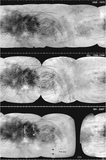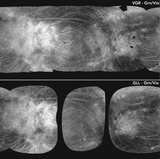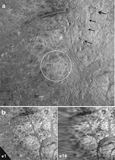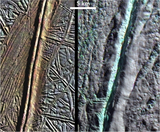Image Details
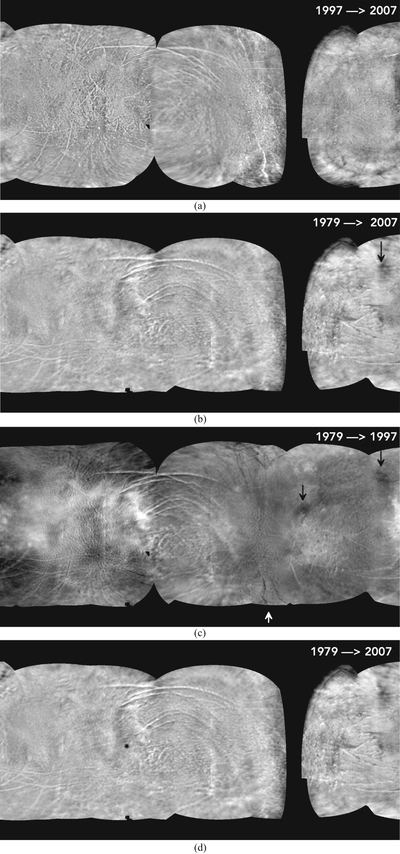
Caption: Figure 3.
(a) The 1997–2007 Δt ratio map of Europa, highlighting potential changes in the GLL-to-NH epoch. The map was created by ratioing global image maps from GLL and NH (see Figure 1), with an additional 1000 km-wide highpass filter to suppress global-scale photometric artifacts. The tiny bright spot at center left is the fresh bright ray crater Pwyll. Bright spots and arcuate lines are known chaos units and dark reddish double ridges that appear in the ratio maps due to differences in contrast in the different imaging data sets used. (b) The 1979–2007 Δt ratio map of Europa, highlighting potential changes in the VGR-to-NH epoch. The map was created by ratioing global image maps from VGR and NH (see Figure 1), with an additional 1000 km-wide highpass filter to suppress global-scale photometric artifacts. Arrows indicate smaller artifacts discussed in the text. (c) The 1979–1997 Δt ratio map of Europa, highlighting potential changes in the VGR-to-GLL epoch. Map created by ratioing global image maps from VGR and GLL (see Figure 1), with an additional 1000 km-wide highpass filter to suppress global-scale photometric artifacts. Arrows indicate smaller artifacts discussed in the text. (d) The 1979–2007 Δt ratio map of Europa (from Figure 3(b)), with a false synthetic 125 km wide bright plume deposit added to original VGR mosaic at the E12 GLL magnetometer detection site (small dark spot at center left) to test detectability of surface changes.
Copyright and Terms & Conditions
© 2020. The American Astronomical Society. All rights reserved.


